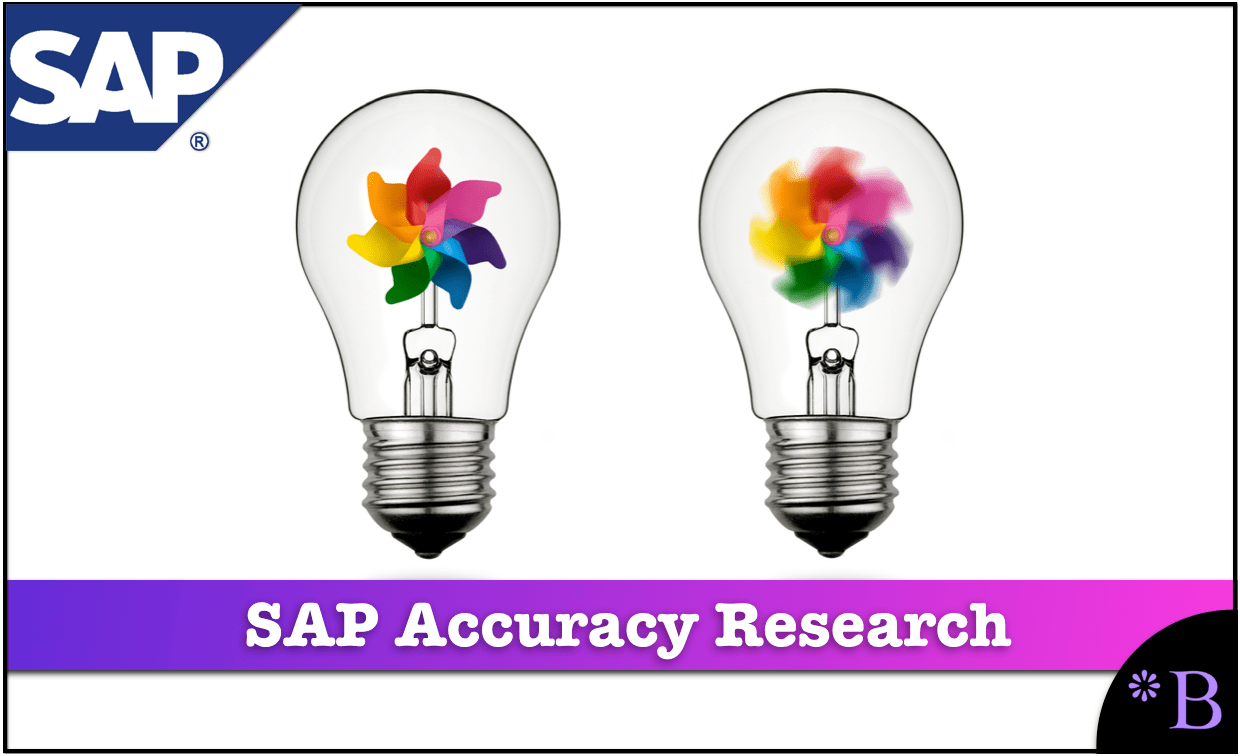How Accurate Was SAP About HANA Enabling People to Work 10 to 10,000 Times Faster?
Executive Summary
- For years SAP has said that that HANA would enable people to work 10,000 times faster.
- In this article, we review the accuracy of this claim.
Video Introduction: What SAP Said About HANA Enabling People to Work 10 to 10,000 Times Faster?
Text Introduction (Skip if You Watched the Video)
In 2014, Steve Lucas stated that quote – HANA would help people work faster, from 10 to 10,000 times faster, and the in-memory applications will make our business lives simpler and help us work smarter. – unquote. That is quite a lofty claim made by Lucas. Unsurprisingly, SAP never offered any study to support this. And if it were true, it would mean that workdays could be truncated to just a few seconds per day. SAP proposed the idea of a direct relationship between the speed increase of a database with productivity. You will learn how accurate SAP was in their claim around HANA, enabling enormous productivity gains.
How Does Database Speed Translate to Productivity
System processing speed does not translate directly to productivity. Computer hardware is a virtually uncountable number of times speedier than it was twenty years ago. Productivity levels have not increased anything like computer hardware’s improvement. Secondly, Steve Lucas’ estimations of HANA’s performance increase over previous database iterations is also incorrect.
But this is untrue and is reminiscent of the character The Flash. The Flash can move his body so fast he can travel in time. Interestingly, while he can move his body this quickly, the comic books seem to leave out that a human’s brain is only designed to process motion at a certain speed. So the Flash’s brain would need to be completely different to prevent him from killing himself every time he moved his body through all the things he would run into.
Applying Basic Math to this Claim
If we take the example of analyzing a spreadsheet, most people know that analyzing data is not in the computer’s calculation, but in human processing, if we take Steve Lucas’ average number of 5,000 times and apply it to a 4-hour session of analysis. Suppose that were to increase (because of the use of HANA) to 2.88 seconds. So a full day for this worker would be less than 6 seconds.
- Does Steve Lucas promise the 5 * 6 = 30-second workweek? Because that does sound pretty good.
- By the time you get to work, after sitting down for 2.88 seconds, it would be time to drive home again, which of course, means you beat rush hour.
- Will HANA completely change traffic patterns in our major cities?
Steve Lucas’ brave new world brings up some interesting questions. For instance
- Can the employee keep their full salary and health benefits, and cafeteria access at this level of work, or
- Is there the potential that this employee might get laid off as now his entire department has a 2.88-second workday?
- People who work 2.88 second days are typically considered lazy by most societies. How will the employee deal with the psychological impacts of being viewed as “chillaxing” by people who can’t comprehend “in-memory computing efficiencies.”
I am also curious if HANA can be applied to meetings as there are many meetings I have attended that could have benefited from this type of time compression.
Just that sort of back-of-the-envelope approximation should be enough to dismiss this claim.
Conclusion and Calculation
SAP receives a 0% accuracy rating on HANA enabling people to work 10 to 10,000 times faster (than they previously did).
Link to the Parent Article
This is one of many research articles on a specific topic that supports a larger research calculation. For the overview of the research calculation for all of the SAP topics that were part of the study, see the following primary research A Study into SAP’s Accuracy.
